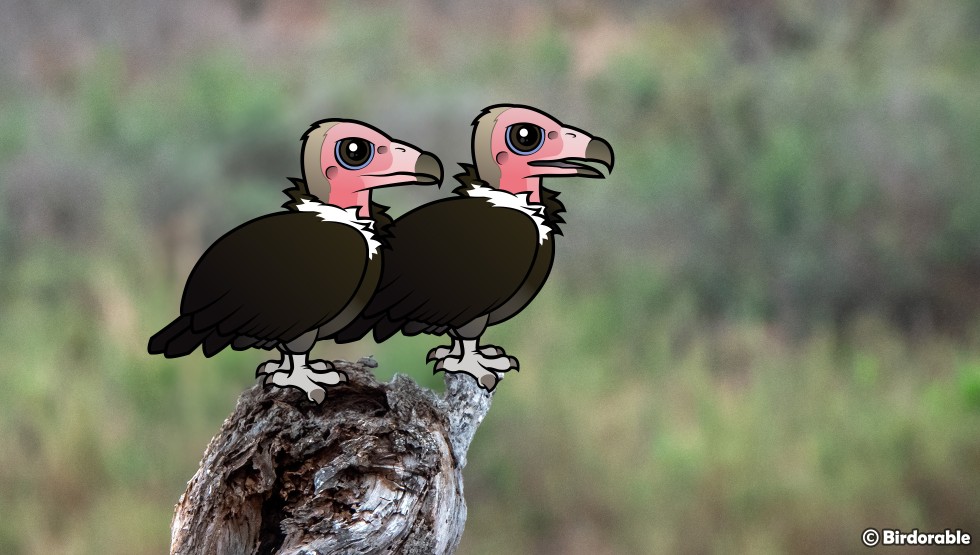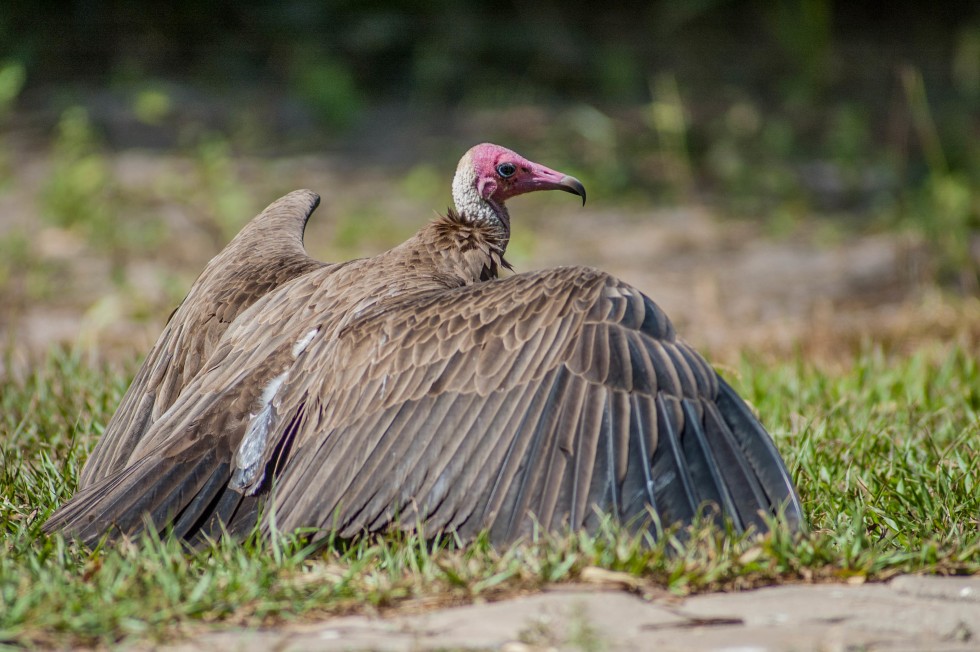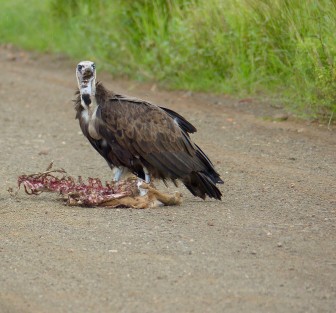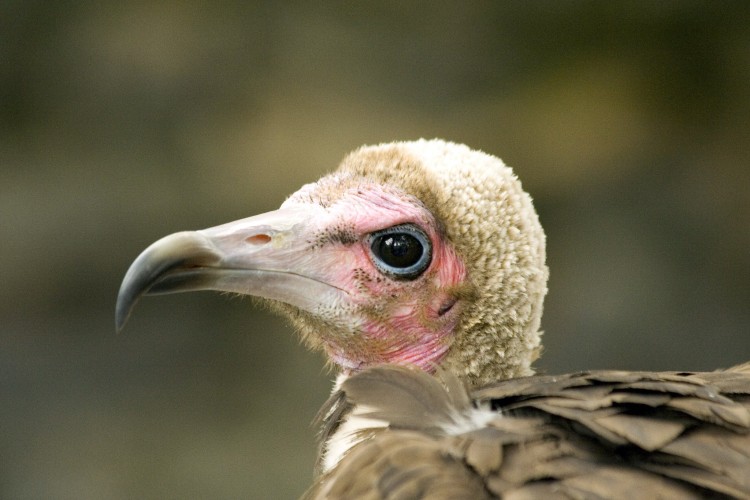Vulture Week 2024
Meet the Hooded Vulture: Africa's Scruffy Scavenger Species Profile

The Hooded Vulture is one of Africa’s most distinctive scavengers, easily recognized by its bare, pinkish head and scruffy, hood-like feathers that give this bird its name. Found across sub-Saharan Africa, the Hooded Vulture is typically seen patrolling the skies or perched near human settlements, where it feeds on the remains of dead animals and scraps left by humans. Despite its essential role in the ecosystem, this species is facing significant threats, leading to a dramatic decline in its population.
Hooded Vultures are relatively small compared to other vulture species, with a wingspan of around 5.5 feet and weighing between 3.5 and 5.3 pounds. They are often mistaken for younger or smaller vultures due to their size and scruffy appearance, but their pinkish face and white ruff of feathers around the neck make them easy to identify.

Sunbathing Hooded Vulture by Pete Richman (CC BY 2.0)
These vultures are highly adaptable and can be found in a variety of habitats, from savannas and forests to urban areas. They are often seen alone or in small groups, although larger gatherings can occur around abundant food sources. Hooded Vultures are not picky eaters; they consume carrion, waste from slaughterhouses, and even scraps from local markets. Their feeding habits are crucial for maintaining a clean environment, as they help dispose of rotting carcasses that could otherwise spread disease.
In addition to their role as scavengers, Hooded Vultures have an interesting breeding habit. They typically nest in tall trees, where they build a simple platform of sticks in a foliage-covered fork. Most other vultures that use trees for nesting will build at the top of the tree. The female usually lays a single egg, which both parents incubate for about 48 to 54 days. After hatching, the chick is cared for by both parents until it fledges at around 3 to 4 months old.

Hooded Vulture enjoying a meal by Bernard DUPONT (CC BY-SA 2.0)
Unfortunately, the Hooded Vulture’s adaptability has not been enough to protect it from human-induced threats. The species has seen a sharp population decline in recent decades, leading to its classification as Critically Endangered on the IUCN Red List. The primary threats to Hooded Vultures include habitat loss and poisoning. In some areas, vultures are deliberately poisoned by poachers who do not want them to reveal the location of poached animals to authorities. Additionally, traditional medicine practices in some cultures have created a demand for vulture body parts, further endangering these birds.
Conservation efforts are underway to protect the Hooded Vulture, including anti-poisoning campaigns, habitat protection, and community education programs. In some regions, laws have been enacted to regulate the use of harmful pesticides and chemicals that can poison vultures. International organizations are also working to monitor vulture populations and promote sustainable practices that support both local communities and wildlife.
The plight of the Hooded Vulture serves as a reminder of the delicate balance between humans and nature. These birds play an essential role in maintaining healthy ecosystems, and their decline could have far-reaching consequences. By supporting conservation efforts and raising awareness about the threats facing vultures, we can help ensure that the Hooded Vulture continues to soar through Africa’s skies for generations to come.

Hooded Vulture by Maurice Koop (CC BY-ND 2.0)
The Hooded Vulture joined Birdorable on August 24, 2012. Find unique gifts featuring our cute cartoon Hooded Vulture in our shop; see some fun example options below!













Comments
Leave a comment
Thank you!